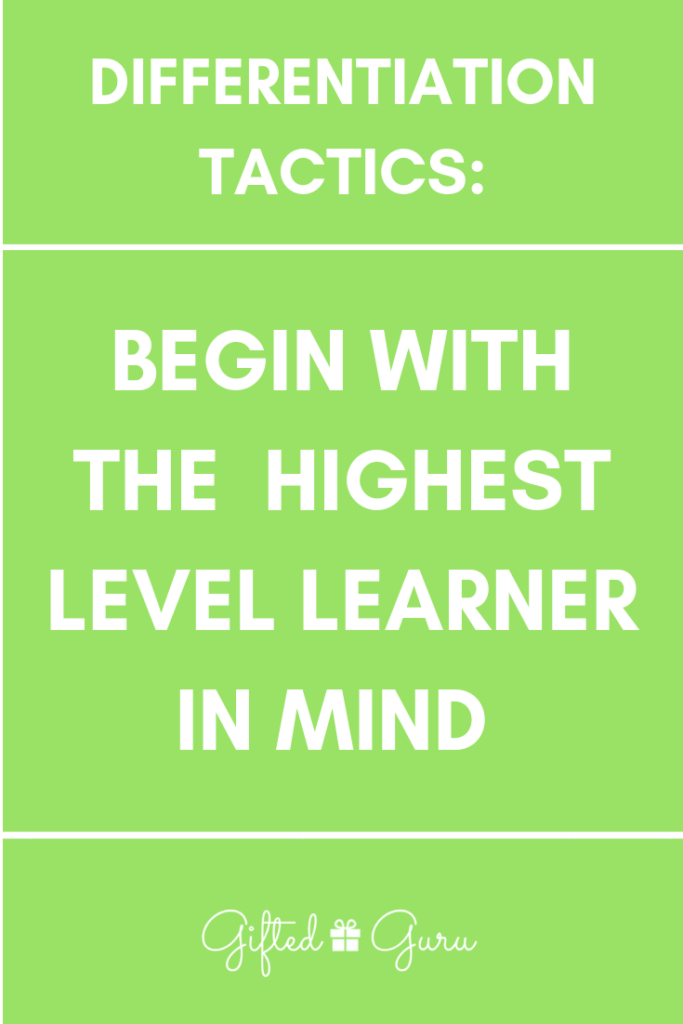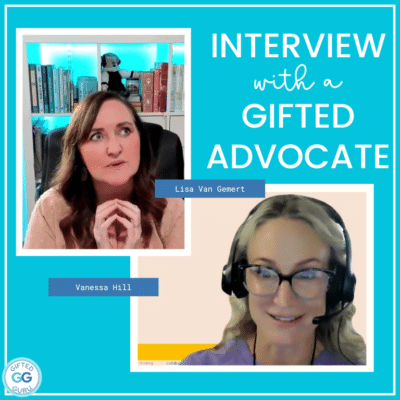There’s a YouTube cooking channel called Chowhound that has a series called “You’re Doing it All Wrong.” They take fundamentals of cooking (mashed potatoes, peanut butter and jelly sandwiches, etc.) and show how you’re making them the wrong way. Of course, they show you the right way, and then you, too, can make creamy mashed potatoes!
Whenever I discuss differentiation with educators, the most common reason for resistance I get is time. Overwhelmed educators don’t have time to plan one more thing. I understand.
I don’t disagree that time demands on teachers seem to rising at never-before-seen levels. I would disagree that differentiation takes more time than refusing to differentiate.
If you think it does, Friends, you’re doing it all wrong.
There isn’t really a technical term for non-differentiated classrooms. Let’s call it “single-strand.”
When planned and implemented using best practices, differentiation is not a time burden. In fact, I would argue it is a time saver.
Hear me out.
Differentiation Saves Time
When classrooms are differentiated effectively, there are fewer classroom management problems than in single-strand classrooms.
It’s not a magic wand that will make kids behave appropriately (we can dream), but it does make it less likely that teachers will have students who waste the teacher’s time complaining that they are bored or who don’t complain but also don’t work because the work isn’t respectful.
When they do whine (which is another service gifted kids offer; see my article on that), fewer people listen because they know the whining is groundless.
Teachers will spend more time actually teaching when the classroom’s practices are aligned with learners’ needs.
When classrooms are differentiated effectively, parents are less likely to request conferences and send lots of emails about their underserved child that may be necessary, but also take time.
Refusal to differentiate also has a cost, and that cost is paid in time and frustration and suffering students.
Teachers will pay a time price one way or another.
As an educator, I’d rather spend time planning than fighting. But that’s just me.
I understand that teachers who sailed through their own school years on the wave of regular work and did just fine may have a hard time understanding why it is that gifted kids need something different. I mean, shouldn’t the kid just take the “A” and be glad it was easy? Nope.
It’s soul crushing to show up to school everyday to do work that is not aligned with your ability, and that’s true whether the work is too challenging or not challenging enough.
You’re Already Doing It
Teachers are required to differentiate for students with learning difficulties or physical or mental health issues. No one can say we don’t have time to do that. Well, you can, but bad things will happen to you.
The learners themselves are already differentiated. They don’t wait for permission to have different learning needs. And they’re not doing it to punish the teacher. It’s just how it is.
No response is a response.
Refusal to differentiate for gifted learners is a response, and it’s important that we’re honest with ourselves about that.
There’s no option to refuse to meet the needs of gifted learners and have that be a good thing for them. We make a conscious decision to slight them when we meet the needs of all but them.
The Trick is in the Planning
The trick to differentiating without feeling like you need to act like Hermione in The Prisoner of Azkaban where she was going to all of those classes simultaneously is to plan correctly. There’s an order, folks, and it goes like this:
Plan for your highest learners first.
I understand that flies in the face of the way the textbooks do it, with plans for the on-level learners spelled out in agonizing detail and little boxes off to the side with ideas for adjusting for learners who need scaffolding or enrichment.
I understand that’s not how colleges teach you to do it, with making a lesson plan for everyone and then adding a line or two about what you’re going to do for the students who need something different at the bottom, if you think of it.
That’s doing it all wrong.
Here’s how you do it:
1.Plan your lesson with your highest learners in mind. Consider what they can do and think. Just worry about them for now. Create the whole lesson plan with them in mind.
2. Look at that lesson carefully and consider what adjustments need to be made to allow your on-level students to complete it successfully. Ask yourself:
- What of this can my on-level learners do without adjustment?
- What do I need to add or take away?
- If they would struggle with x, what could they do instead?
- Do they need more support (different materials? manipulatives? more detailed directions? an example? a tutorial video? more/fewer constraints?)
Make any adjustments necessary.
Keep in mind that students can flow in and out of whole group, single-strand instruction and differentiated work. It’s not all-or-nothing.
If one section isn’t a good fit, just think of what you’d have to do to adjust that section.
3. Repeat this step for your learners who need scaffolding or who have IEPs or 504 accommodations. What do you need to add or take away or support or adjust for them to be able to engage with the learning experience appropriate to their ability?
That’s it. That’s the secret. Why does this work so well?
- Because it’s much easier to think of how to adjust for less challenge than to take a simple task and try to make it more challenging.
- This clone-and-adjust method becomes so intuitive and smooth over time that you can make the adjustments in just a few minutes per lesson plan.
- Gifted learners aren’t at the mercy of having a teacher finish a lesson plan and then decide if they have time to think of them or not.
- It helps struggling learners as well, because as teachers increase their ability to clone-and-adjust, they become more adept at considering what adjustments are needed and effective. Like anything else, the more you practice well, the better you get at it.
The Most Important Rule of All
Too many teachers think differentiation means that students have to all be doing something different. The most important rule of all to remember with differentiation is this:
It’s not about what they’re doing: it’s about what they’re thinking.
It’s about thinking level, not a different project or task. When you focus on the thinking level when considering your gifted students, rather than worrying about making them do some other big, huge, amazing assignment, it becomes magically delicious to plan for them.
An Example of the Differentiation Process
Would you like to see a differentiated lesson plan that even has a screencast of me actually creating it so you can see the process? You can watch it here.
A Caveat
This process requires that teachers are able to create a lesson plan. In the few years, I’ve become aware that many teachers are quite weak in these skills due to a number of factors (such as pre-packaged curriculum they are required to use).
When I’ve asked teachers for lesson plans, many times I’ve received lists of tasks. That’s not a plan.
Creating differentiated lesson plans will be harder if the teacher isn’t used to creating lesson plans at all.
What if You Have to Use Pre-Packaged Curriculum?
Move.
No, really, it’s still possible. In this case, you can’t start with the most able learner in mind because that is never who pre-packaged curriculum is for.
What you do is to look at the on-level lesson and look at the modified lesson and imagine what is missing. If they had planned for the most able learner, what would they have done? Remember: thinking level, not doing level.
Another (actually better) option is to look at the canned curriculum and determine what it’s actually wanting taught. What are the objectives? Take those objectives and create your own lesson, using the canned curriculum as suggestion, not prescription. In my experience, positive results in classrooms create fewer questions about what you’re doing. Teachers have to decide if this is possible in their situation.
Because federal law requires that we support students with learning difficulties, even pre-packaged curriculum has differentiation for them.
You may also like:
- How to Keep Gifted Students Motivated
- Why Students Don’t Like School
- Explaining Differentiation to Parents
- A Differentiated Lesson Plan Step-by-Step (the one mentioned earlier where you get to see one I did)
Would you like an email from me once a month-ish with ideas and info? Sign up and grab a free copy of 15 Ways to Help Gifted Kids Thrive in School.







